China is one of the Four Great Ancient Civilizations in the world with a long-standing Chinese civilization. It is also named Huaxia Civilization, one of the oldest in the world and with the longest duration in the world. About 5,000 years ago, settlement organizations began to appear surrounding the Central China, and then formed into the country and dynasty. Later, there were repeated evolutions and dynasty alterations. Dynasties with a long period include Xia, Shang, Zhou, Han, Jin, Tang, Song, Yuan, Ming, and Qing.
China was once the greatest country in the world, featuring remarkable economy, culture and technology in the world. In history, the dynasties in Central China constantly contacted with and fought against northern nomadic nationalities. Numerous nationalities integrated into Chinese nation. At the beginning of the 19th century, China began to decline under the leadership of Qing Dynasty. After the Revolution of 1911 in the early 20th century, Chinese monarchy quitted the stage of history, which was replaced by republic. In 1949, the People’s Republic of China was founded in Beijing. The regime of the system of people’s congress was established in Chinese Mainland. After 1978, China began to carry out reform and opening up policy. Since then, China’s economy rose sharply again.
The glorious history of Chinese literature is reflected in the Book of Songs, Songs of Chu, Poetry of Han Dynasty, Book of Jin, Poetry of Tang Dynasty, Song Poems, Verse of Yuan, traditional Chinese novels with a couplet title of Ming and Qing dynasty, and essays of the Republic of China since the pre-Qin period. China has colorful folk cultures. Traditional artistic forms include poetry, traditional Chinese operas, calligraphies, and traditional Chinese paintings.
LANGUAGE
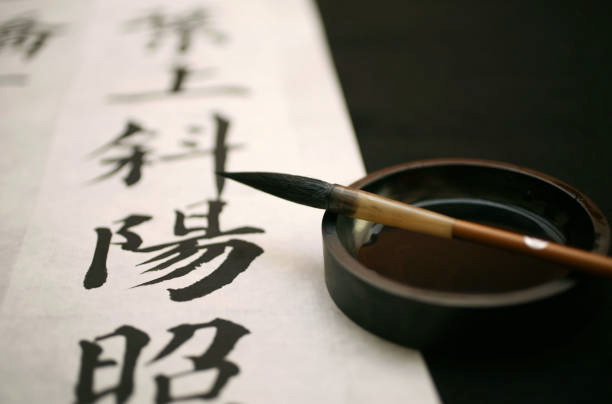
Chinese is the language used by most people in China and also the language with most users in the world.
Chinese character is the character recording Chinese language. Oracle is the earliest character in China, with a history of more than 3000 years. The current Chinese character is evolved gradually from the ancient character. Chinese character is the character used commonly by Han people. Some ethnic minorities also use Chinese character totally. Meanwhile, Chinese character is also the universal character of various ethnic minorities in China. Since 1950s, through the classification and simplification of Chinese character, China has formulated and issued standards including The First Batch of Variant Chinese Character Sorting Table, The Scheme for Simplifying Chinese Characters, Summary Table of Simplified Chinese Characters, Commonly Used Characters Table for Modern Chinese, and A List of Common Modern Chinese Characters. The Law of the People’s Republic of China on the Standard Spoken and Written Chinese Language, issued on October 31, 2000, determined standardized Chinese characters as commonly used characters of the country. Standardized Chinese characters are classified and simplified characters and inherited characters not classified and simplified.
Beijing Opera of China
Peking Opera Facial Masks

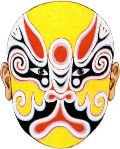
Beijing Opera of China is a national treasure with a history of 200 years. In the 55th year of the reign of Emperor Qianlong of the Qing Dynasty (1790) , the four big Huiban opera Troupes entered the capital and combined with Kunqu opera, Yiyang opera, Hanju opera and Luantan in Beijing’s theoretical circle of the time. Over a period of more than half a century of combination and integration of various kinds of opera there evolved the present Beijing Opera. Beijing Opera is the most significant of all operas in China, and it has a richness of repertoire, great number of artists and audiences, that give it a profound influence in China and plays a large role in Chinese culture
Chinese Knot
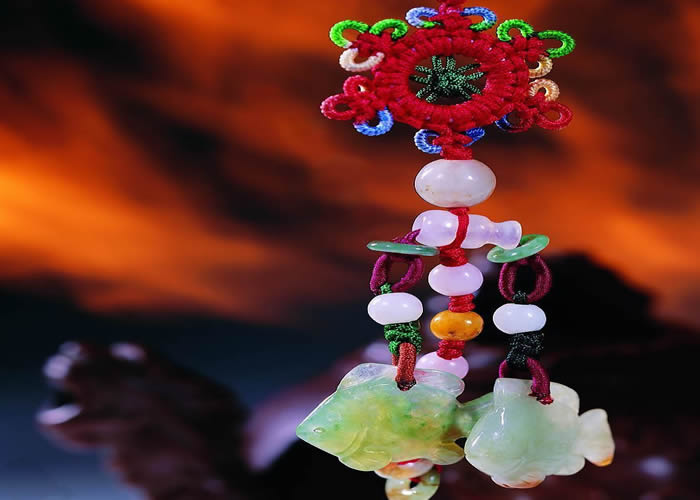
Chinese knot Archaeological studies indicate that the art of tying knots dates back to prehistoric times. Recent discoveries include 100,000-year old bone needles used for sewing and bodkins, which were used to untie knots. However, due to the delicate nature of the medium, few examples of prehistoric Chinese knotting exist today. Some of the earliest evidence of knotting have been preserved on bronze vessels of the Warring States period (481–221 BCE), Buddhist carvings of the Northern Dynasties period (317–581) and on silk paintings during the Western Han period (206 BCE–CE6).
Chinese Dragon Introduction
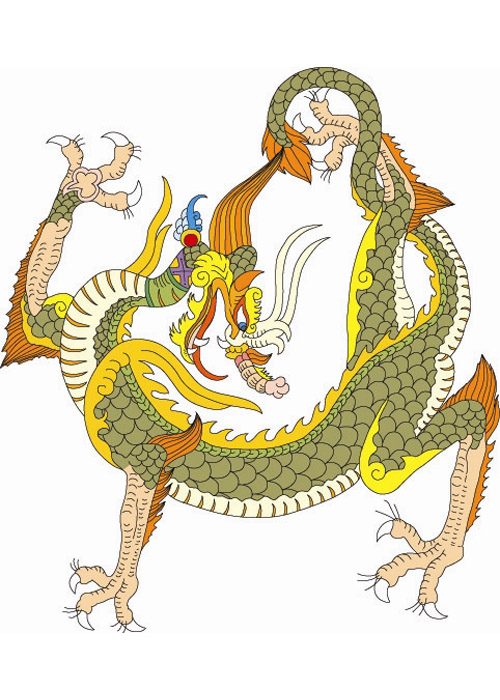
The people of China have a long-held belief that they are descendants of the dragon, a tradition that is firmly embedded in their culture and one that is encountered across all aspects of Chinese society and in the minds of its people. Whereas in western cultures dragons are usually regarded as a symbol of malevolence, in China the dragon is held in high esteem for its dignity and power for good.
Chinese kung fu Wushu

Chinese kung fu Wushu (also known as kung-fu or martial arts) is one of the typical demonstrations of traditional Chinese culture. It is a sport which utilizes both brawn and brain.
Wushu enjoys a long history and great popularity in China. The theory of Wushu is based upon classical Chinese philosophy, while the skills of Wushu consist of various forms of fighting: fist fights, weapon fights, and other fighting routines (including such offence and defence acts as kicking, hitting, throwing, holding, chopping and thrusting) and unarmed combats. Wushu is not only a sporting exercise but also an artistic form. It is used to cure illness as well as for self-defence and is a comprehensive form of culture of the human body.
As one of the earliest and long-lasting sports, Wushu has developed its own characteristics over time.
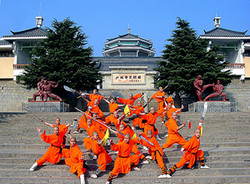
Shaolin Temple is probably the most famous temple in China, not only because of its long history and its role in Chinese Buddhism, Shaolin Temple Pagodabut also because of its martial arts or Wushu Chan. Shaolin Temple is situated in the beautiful Songshan Mountains, which is only eight miles of Dengfeng and about 50 miles southwest of Zhengzhou, the capital of Henan Province.
Chinese Painting
Chinese traditional painting dates back to the Neolithic Age about 6,000 years ago. The excavated colored pottery with painted human faces, fish, deer and frogs indicates that the Chinese began painting as far back as the Neolithic Age. Over the centuries, the growth of Chinese painting inevitably reflected the change of time and social conditions. From Primitive to Modern.
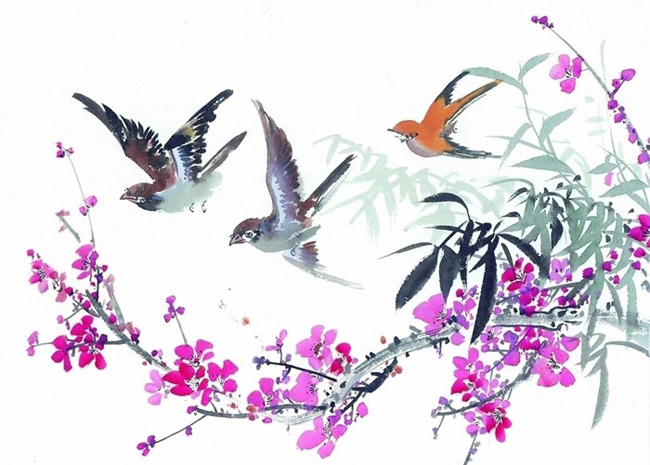
Chinese Porcelain
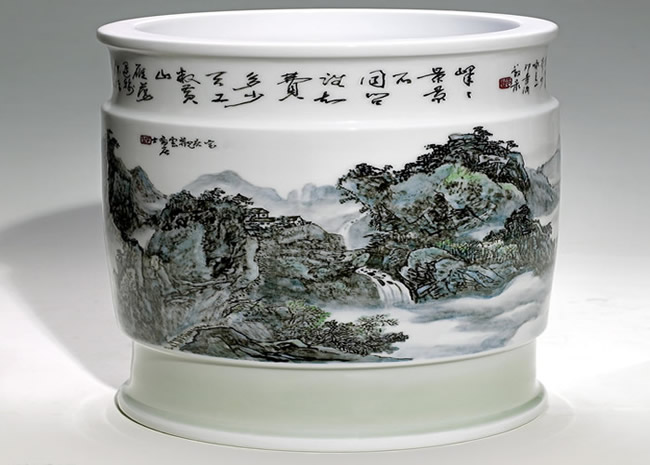
In the context of Chinese ceramics the term porcelain lacks a universally accepted definition. This in turn has led to confusion about when the first Chinese porcelain was made. Claims have been made for the late Eastern Han period (100 to 200 AD), the Three Kingdoms period (220 to 280 AD), the Six Dynasties period (220 to 589 AD), and the Tang Dynasty (618 to 906 AD).
Chinese Instruments
Erhu is a kind of violin (fiddle) with two strings which, together with zhonghu, gaohu, sihu, etc, belongs to the “huqin” family. It is said that its origin would be dated up to the Tang dynasty (618-907) and related to the instrument, called xiqin originated from a Mongolian tribe Xi. During Song dynasty (960-1279), the instrument was introduced to China and was called “Ji Qin”. Soon the second generation of the huqin was among the instruments played at the imperial banquets. During the Dynasties of Yuan (1206-1368), Ming (1368-1644) and Qing (1644-1911), the erhu underwent a great development at the time of the golden age of the local operas.
Chinese Auspicious Symbols and Animals


China boasts many popular auspicious symbols. For instance, on the occasion of the New Year, festivals or festive days, people like to decorate their rooms and articles with such auspicious patterns, expressing their desire for a happy life and celebrations on a propitious time and festive day.
The auspicious symbols and animals emerged in the Zhou Dynasty more than 3,000 years ago, and then became popular among the Chinese people. Nowadays, they are still an indispensable part of Chinese life. These auspicious patterns and symbols cover a wide range, and here are several commonly seen
Chinese seals
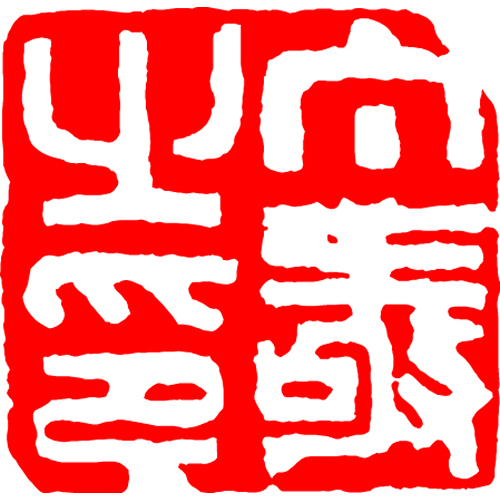
When foreigners negotiate, or register in certain areas of China, they may be surprised at Chinese’ special fondness and preference for seals. To Chinese, seals are an art of deep cultural roots, which combines the essence of both calligraphy and engraving and inspires generations to study, to appreciate and to collect.
It is believed that seals came out as early as 8,000 years ago after our ancestors could make pottery wares and had private property. They were assumed to make marks on their own possessions to prevent theft. When the first dynasty was established, the king began to use seals to empower and to show lordly credits. Only the king’s special seal was then called ‘Xi’, which represented the highest authority. The first emperor of China, Qin Shi Huang, had his ‘Xi’ made out of the invaluable and beautiful jade ‘Heshi Bi’.
Folk Image
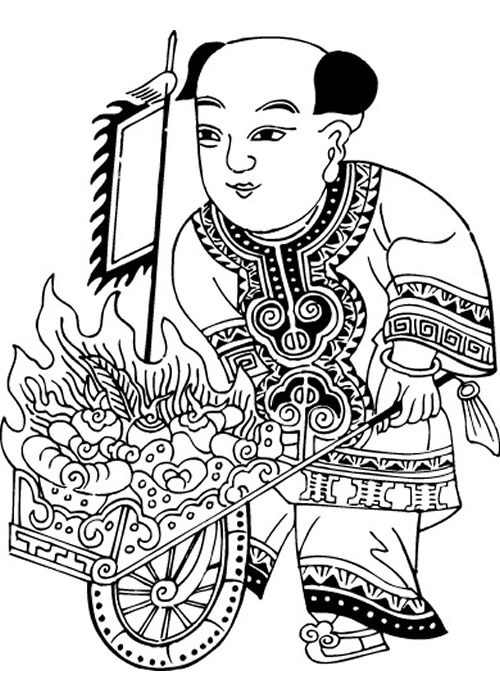
Woodblock Prints
Perhaps the most common of all Chinese folk arts are woodblock prints. They are called nianhua in Chinese. This means “New Year’s pictures,” because they are always put up around the house during the New Year Festival. Woodblock prints are very bright and colorful posters, with thousands of different kinds of designs. They have been made since the 11th century. People inChina use them for two reasons: to bring good luck and for decoration. Chinese people call buying nianhua “inviting in the gods” because pictures of gods are some of the most popular kinds of prints.
Paper Cutting

Paper-cutting is one of China’s most popular folk arts. Archaeological finds trace the tradition back to the 6th century; it is supposed that the beginning of paper-cutting is even a few centuries earlier. Paper-cuttings are used for religious purposes, for decoration and as patterns.
Chinese paper cutting is a unique artform and has existed for thousands of years with a long history featuring both national and regional themes. Paper began as a precious commodity in the Han Dynasty. Most of the people with access to paper for an entertainment cause such as art were usually nobles in royal palaces[1]. The Song Dynasty scholar Chou Mi mentioned several paper cutters who cut paper with scissors into a great variety of designs and characters in different styles, and a young man who could even cut characters and flowers inside his sleeve. The oldest surviving paper cut out is a symmetrical circle from the 6th century found in Xinjiang, China.






















